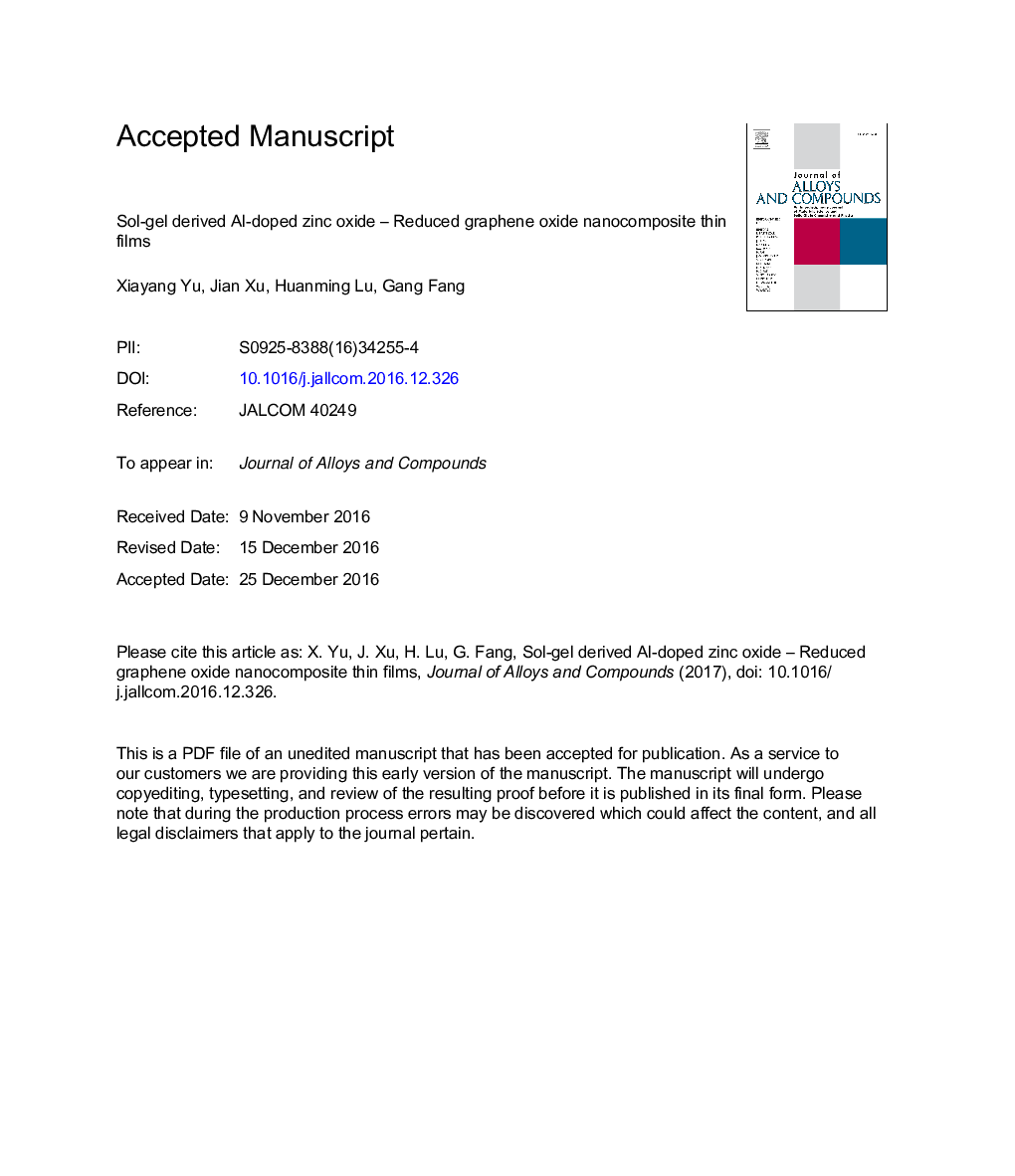| Article ID | Journal | Published Year | Pages | File Type |
|---|---|---|---|---|
| 5460511 | Journal of Alloys and Compounds | 2017 | 31 Pages |
Abstract
Transparent conductive ZnO films doped with 0-6 mol% of Al3+ (or AZO films) and AZO- rGO (rGO - reduced graphene oxide, â¼0-0.5 g/L) nanocomposite films were deposited on silica glass substrates by sol-gel multilayer spin-coating, with annealing at 250 °C in vacuum. The effects of the processing conditions on the structure, optical and electrical properties of the AZO-rGO films, as well as the AZO thin films for comparison, were investigated by XRD, Raman spectroscopy, TEM and SEM, UV-Vis-NIR spectroscopy, and with the four-point prober and Hall effect measurements. Al3+ ions and rGO sheets existed in the composite films, and both of more Al3+ amount and more rGO could result in worse crystallinity of ZnO. More amount of rGO led to more rGO flakers existed in the surface of the AZO-rGO films. Increasing Al-doping amount could not obviously affect the optical transmittances of the AZO-rGO films, but lead to the UV absorption edge of the films slightly blue-shifted. Optical transmittances of the AZO-rGO films decreased obviously with increasing the rGO ratio, but slightly decreased with increasing the annealing time. The minimum sheet resistance Râ¡ could be obtained when Al-doping amount was â¼2 mol% and rGO â¼0.25 g/L: 50.1 kΩ/â¡ for the AZO film and 15.2 kΩ/â¡ for the AZO-rGO film. Addition of rGO could improve the electric conductivity of AZO films. Longer time of vacuum-annealing could also improve the electric conductivity of the AZO-rGO films. For the AZO-rGO film doped with 2 mol% Al3+ and 10 mg rGO after vacuum-annealing for 12 h, Hall mobility was â¼17.7 cm2/Vs and the carrier concentration was â¼10.6 Ã 1019/cm3.
Related Topics
Physical Sciences and Engineering
Materials Science
Metals and Alloys
Authors
Xiayang Yu, Jian Xu, Huanming Lu, Gang Fang,
